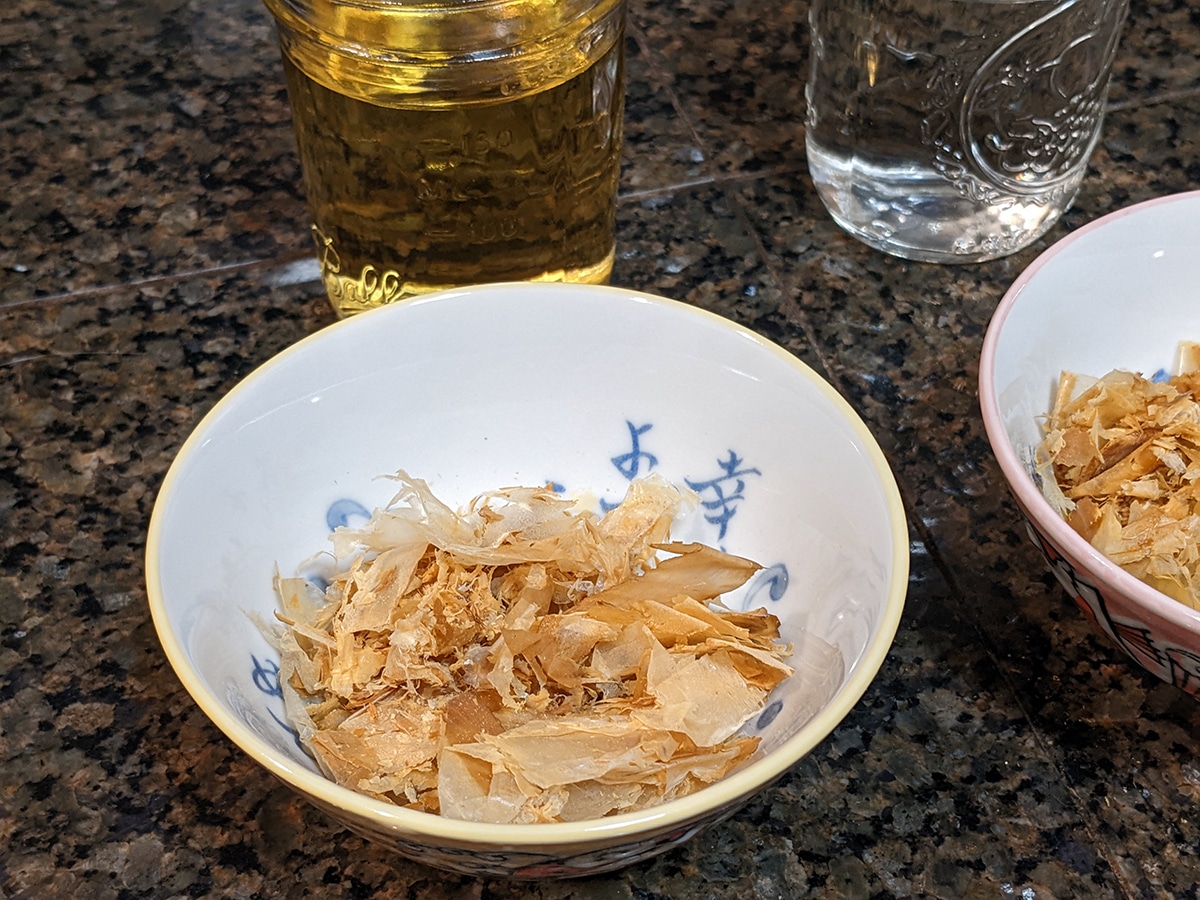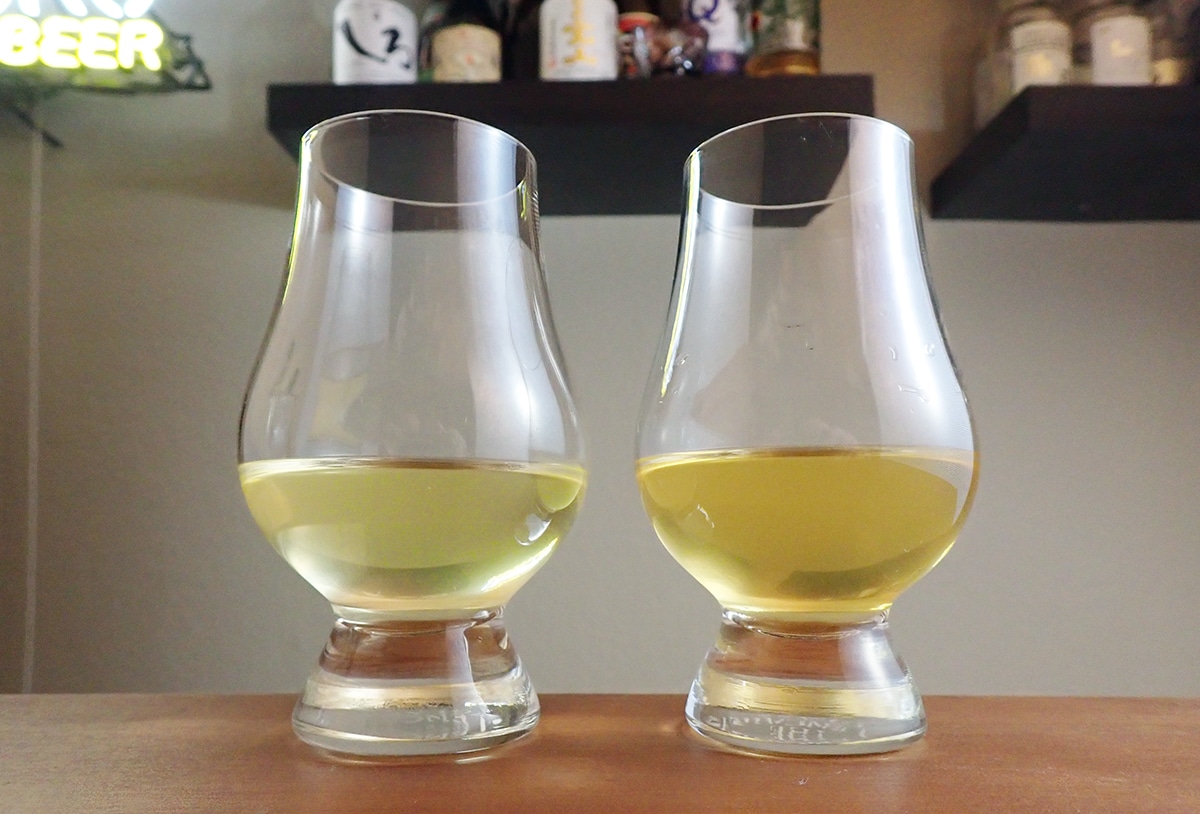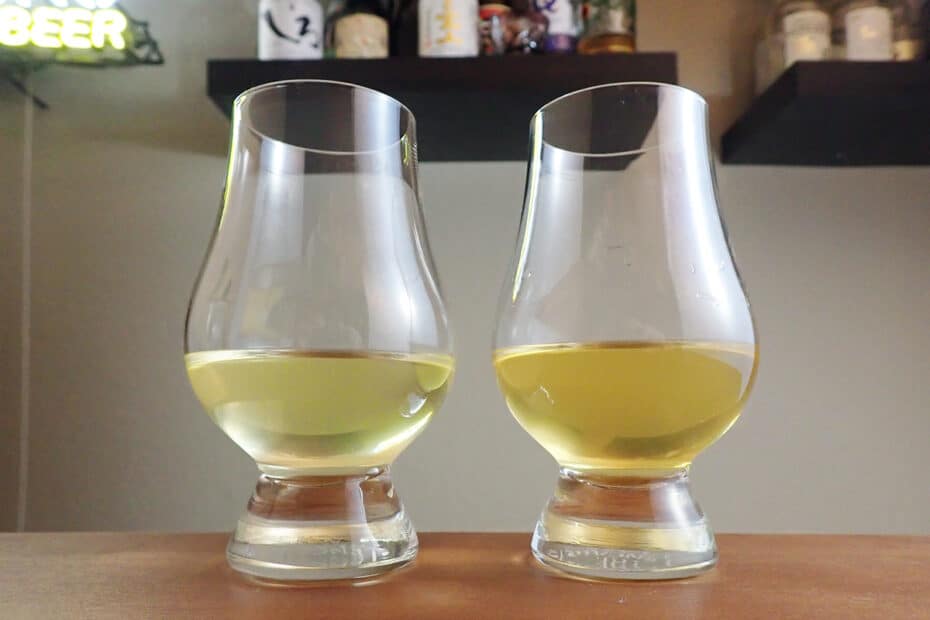My dashi-shu project aims to produce delicious dashi-flavored alcohol for use in cocktails. The dashi-shu will be a secondary cocktail ingredient with enough intensity to support the drink and add complexity.
I’ll also develop milder dashi infusions for use as the primary cocktail ingredient using the results of these tests.
What is Dashi-shu?
Dashi-shu is an alcoholic beverage with a flavor derived from konbu and/or katsuobushi. Shiitake and niboshi (dried sardine) can be used too. The dashi flavor result from infusing, fermenting or distilling these ingredients.
Is Anyone Making it?
Konbu is one of over 50 permitted ingredients for honkaku shochu. Shiitake is sometimes used in dashi and is another permitted shochu ingredient. Neither of these is easy to find outside of Japan. However, konbu and shiitake shochu are excellent dashi-shu base spirits.
Bars, restaurants, and cocktail enthusiasts have been making konbu and katsuobushi-infused alcohol for some time. I’ve played around with it too, but in a haphazard fashion.
My dashi-shu project is my first serious exploration of making something delicious. But before I get into methods and results, I want to mention one other interesting dashi-related drink.
Dashi-wari
Dashi-wari is made by adding warm dashi to alcohol like sake or shochu. This practice resembles oyuwari derivatives like sobayu-wari, made from hot soba noodle water.
Maruken Suisan, an oden restaurant in Tokyo sells “dashi-wari” (だし割). About 1.5 of sake in a one-cup is topped with their dashi oden stock. Shichimi togarashi floats on top.
There are also retail brands bottling and selling something similar across Japan.

Dashi-shu Tests
At room temperature, I’ll determine the ideal infusion recipe and length for katsuobushi and konbu individually. Two separate alcohol bases will be used: a neutral spirit (Monopolowa vodka-Takara Jun blend) and a mild-flavored blended whisky (Suntory Toki).
Konbu Infusion
I start by testing konbu vodka and konbu whisky. I used 2 grams of dried, unrinsed konbu for 6 ounces of each spirit. I tasted both after 15 minutes, and they showed minimal influence from the konbu. I set the timer for 45 minutes later.
One hour after the infusion started, both the vodka and whisky had a faint aroma of seaweed. The flavor of the vodka was sweet, salty, and briny. It was tasty but subtle. The Toki had enhanced umami but was also delicate.
Two hours after the process began, the vodka had a faint yellow color. The kelp aroma increased, as did the flavor intensity. But still too subtle. The same went for the Toki. It’s pretty tasty after two hours. If I was making an old fashioned entirely with this infusion, I might stop here.
Four hours into the test, the richness of both spirits had increased. But overall, both were more subtle than I wanted. I decided to leave these until the morning.
Roughly twelve hours into the test, the vodka was pale yellow with a rich aroma of konbu. The flavor was pronounced, and a mild astringency was present on the finish. The whisky had a rich umami and a sweet, long finish. Very good stuff.
But next time, I will double the amount of konbu used. It reached a peak sweetness and umami around 12 hours. After that, bitterness became more prominent.
No fine straining was needed
Katsuobushi Infusion
Assuming katsuobushi won’t need much extraction time, I started by aging both spirits for one-minute intervals. Continuous stirring was employed. Again, six ounces of Suntory Toki was used, as was six ounces of vodka, making two separate infusions. I used two grams of hana-katsuo for each.
After one minute, the vodka had a deep greenish-yellow color and lots of fine sediment. The aroma of bonito flake was faint, but the flavor was already somewhat rich. The whisky also evolved quickly.
After another minute of using the original katsuobushi, the color of each was unchanged. But there was a slight increase in smoky, sweet umami.
Three minutes into the infusion process, the color of the vodka was a rich green. The aroma and flavor of both spirits had deepened subtly.
So after two to three minutes of infusing, both spirits tasted like a rich katsuobushi broth. But I wanted more extraction.
I used half of each spirit to infuse an additional one gram of katsuobushi. This effectively doubles the weight of katsuobuoshi used per fluid ounce.
With double the bonito flake, both the vodka and whisky were darker with more umami. The same sweet spot of two to three minutes of infusion time occurred.
After straining through a steel mesh, I used a coffee filter to clarify the spirits.
Blending
I blended the konbu vodka and katsuobushi vodka in equal parts and did the same with the whisky. I was concerned that the finished product would be too weak. But the dashi flavor was rich, complex, and smooth.

Dashi-shu Recipes
Based on the tests above, here are the two recipes that emerged. They are less concentrated than intended but still delicious. The recipes can be tweaked for taste and application. In general, the more katsuobushi and konbu, the more intense the flavor.
Infusion time can be adjusted too. But the bonito flakes showed diminishing gains after two to three minutes. And over-aged konbu runs the risk of tasting like seawater. So be sure to taste test as you go.
Dashi Vodka Recipe
- 12 oz neutral spirit (3:2 Monopolowa potato vodka:Takara Jun shochu)
- 4 g katsuobushi
- 4 g dried konbu
Combine neutral spirit and katsuobushi and stir for three minutes. Next, strain the flakes from the liquid. Add the konbu to the liquid a let it rest at room temperature for 12 hours. Strain away the kelp.
The sediment in the liquid can be filtered with a coffee filter.
Keep in a closed container in the refrigerator.
I think this would work really well in a dirty martini. Doesn’t stand up well as an additional modifier in a negroni.
Dashi Whisky Recipe
- 12 oz mild blended whisky (Suntory Toki)
- 4 g katsuobushi
- 4 g dried konbu
Combine whisky and katsuobushi and stir for three minutes. Then, separate the bonito flakes from the spirit. Add the konbu and infuse at room temperature for 12 hours. Remove the kelp.
Filter the sediment with a coffee filter.
Store in the refrigerator.
Dashi whisky seems ideal for a highball, old fashioned, Penicillin, and a hot toddy.
Making Your Own Dashi-shu
The above recipes are a good starting point. But if you have specific or similar cocktails in mind, I suggest tailoring the recipe to those drinks. For example, you may want to tone down the dashi gin for a dry martini, whereas for a negroni, it will need to have more intensity to stand out.

Oh my goodness. I bet this would be great to make a bloody Mary or a pasta vodka sauce.
Great ideas!